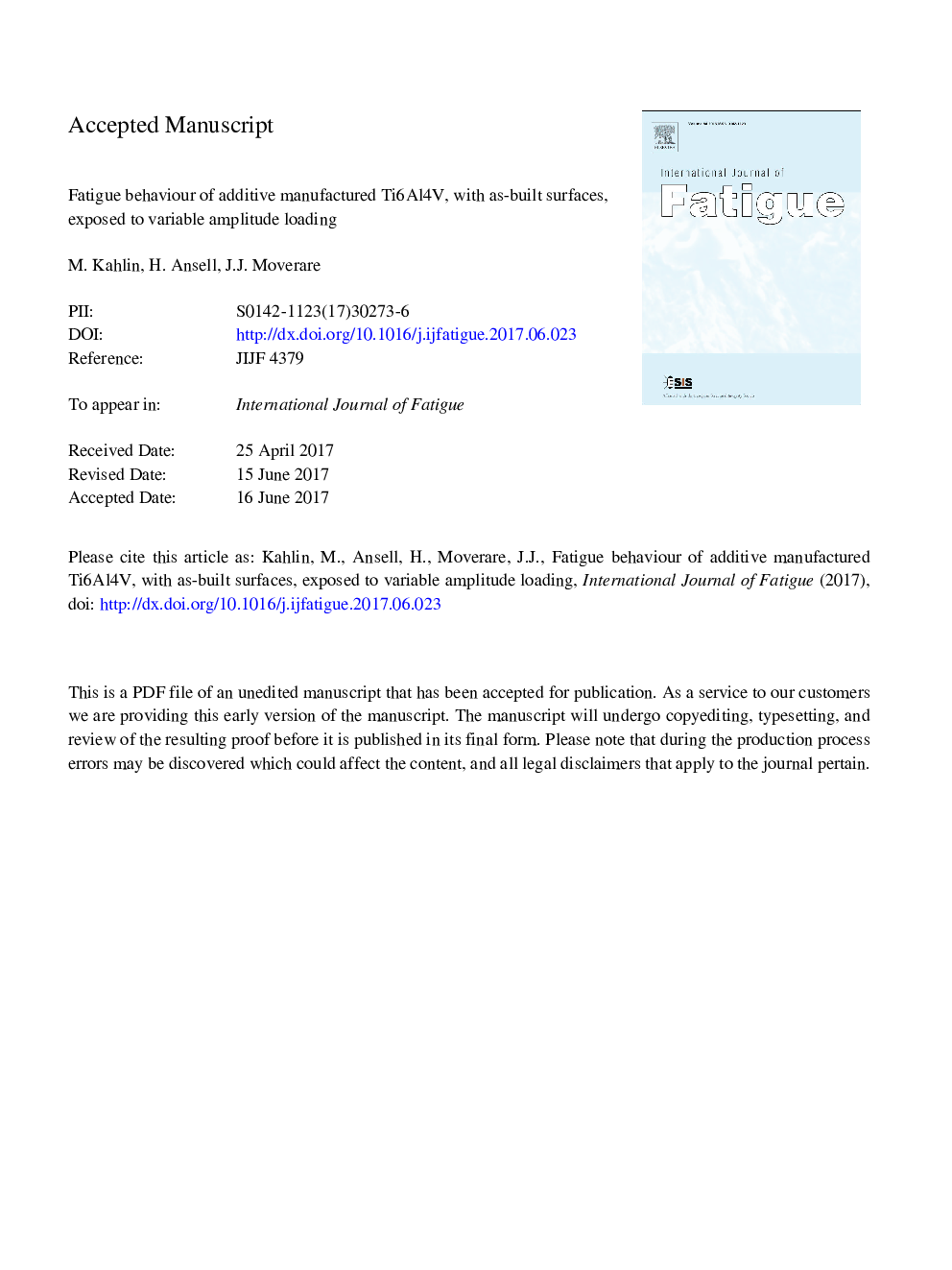| Article ID | Journal | Published Year | Pages | File Type |
|---|---|---|---|---|
| 5014967 | International Journal of Fatigue | 2017 | 28 Pages |
Abstract
Additive Manufacturing (AM) allows for great design freedom compared to conventional manufacturing. This is very attractive for the aerospace industry in which AM could contribute to lightweight designs and thereby reduce fuel consumption, increase payload and extend flight range. The fatigue behaviour for rough as-built AM surfaces has previously been characterized with constant amplitude testing but in aerospace applications, most parts are exposed to variable amplitude loading. The fatigue behaviour for variable amplitude is not always consistent with the behaviour for constant amplitude due to effects of overloads and local plastic deformations. Therefore, variable amplitude loading behaviour of laser sintered and electron beam melted Ti6Al4V, with rough as-built surfaces have been investigated in this study using the Short-FALSTAFF (Fighter Aircraft Loading STAndard For Fatigue) load sequence. The predicted and the experimental fatigue life was overall consistent even though most experimental results exceeded the predicted life, especially for the laser sintered material. These findings show that conventional cumulative damage fatigue life predictions give reliable predictions for AM materials with rough as-built surfaces for the type of tension dominated load sequence used.
Related Topics
Physical Sciences and Engineering
Engineering
Mechanical Engineering
Authors
M. Kahlin, H. Ansell, J.J. Moverare,
